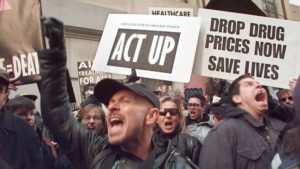A routine dental procedure turned tragic when 6-year-old Caleb Sears died after receiving anesthesia. Since then, his family has been lobbying the California legislature to enact a law that might keep other children from suffering the same fate. The law would require that two medical professionals instead of one attend to children under the age of 7 who receive anesthesia in a dentist’s office. Although so far thwarted in their efforts, the family may have found some degree of healing through their social activism.

Credit: abc.go.com
Enduring the tragic loss of a loved one is a horrible experience. People cope in many different ways. Some turn inward. Others turn outward, looking to inform other people about the tragedy or reshape the environment that allowed the trauma to occur.
For instance, John Walsh formed the National Center for Missing and Exploited Children after his son, Adam, was murdered in 1981. Larry Kramer, a gay man, founded the AIDS Coalition to Unleash Power – ACT UP – in 1987 after witnessing the deaths of dozens of his friends from AIDS. More recently, we’ve seen students leave their classrooms and even march on Washington to protest school shootings.
Activism and Grief
Are there benefits of social activism to those who are grieving? According to many experts, the answer is yes. “A Force for Change: Coping with Grief through Activism and Advocacy,” posted on CNN.com, states that social activism is a way to “make sense of the insensible.” Activism gives you a chance to look closely at why a tragedy occurred and to formulate a plan that you hope will keep the same thing from happening to other people. In this way, social activism helps you create a new future rather than clinging to the past.
Recently, two psychologists, Lawrence Calhoun, PhD, and Richard Tedeschi, PhD, formulated a theory of “posttraumatic growth.” The theory holds that people who are traumatized can use the experience as a catalyst for positive growth, such as a greater appreciation of life and appreciating their own strengths. The authors state that many social movements were begun by people who had experienced trauma.

Credit: npr.org
They agree, though, that posttraumatic growth does not necessarily — and perhaps should not necessarily – occur immediately following a trauma. It often takes time and soul-searching to make a commitment to social activism. If you are pushed into activism when you are not interested or before you are ready, you may feel traumatized all over again.
When and if you are ready, you may find that other benefits of activism include a chance to share your experience of loss with others who have had similar experiences. Additionally, it allows you to both give and receive support around your experience. Finally, it gives you a chance to honor your loved one’s memory and to ensure that your loved one did not die in vain.
Getting involved in social activism can be challenging. You may be able to join a pre-existing group or, like John Walsh, Larry Kramer and the Sears family, you may need to strike out on your own to lobby for the change you want. As the Sears family has discovered, the road to change can be steep and rocky.
Social activism is not for everybody, but if you have lost a loved one, especially as the result of a trauma, it may help you make some meaning of your loved one’s life and death.

 Turning to Social Activism after the Death of a Loved One
Turning to Social Activism after the Death of a Loved One



 The Healing Sound of Singing Bowls
The Healing Sound of Singing Bowls
 “Summons” by Aurora Levins Morales
“Summons” by Aurora Levins Morales














